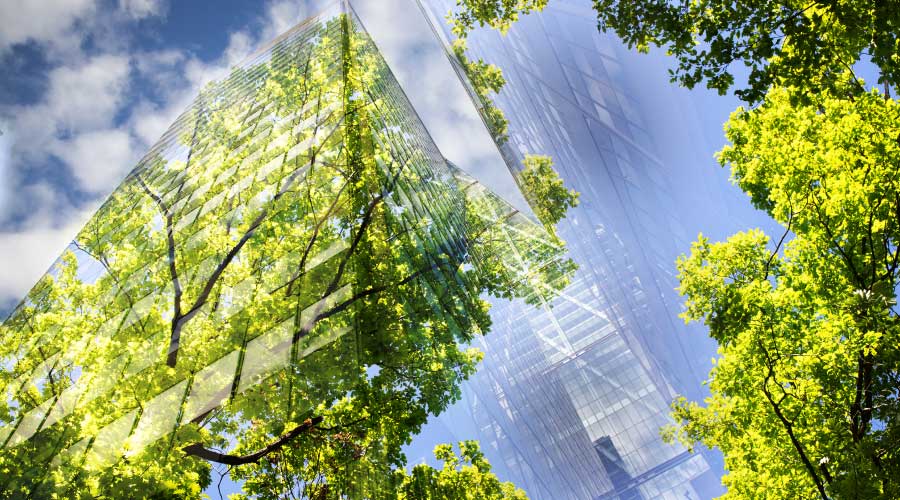USGBC Professional Exams Evolving With Launch Of LEED v4
The U.S. Green Building Council (USGBC) continues to emphasize green building innovation and education, delivering solutions for professionals to highlight advanced knowledge, passion for continued learning, and professional growth.
At USGBC, our network of more than 190,000 LEED credential holders is a critical element in our mission to transform the built environment. By securing LEED accreditation, LEED Accredited Professionals (APs) and LEED Green Associates are distinguishing themselves as leaders in their field, bringing value to the firms that employ them and lending expertise to green building projects that advance the industry as a whole.
The LEED AP credential affirms advanced knowledge in specialized areas of green building, expertise in a particular LEED rating system, and competency in the certification process. It is suited for practitioners actively working on LEED projects to showcase their technical knowledge of LEED in both principle and practice.
Alternatively, the LEED Green Associate demonstrates a solid, current understanding of green building principles and practices. It is ideal for both professionals newer to the fields of sustainability or looking to gain experience and exposure to LEED, as well as those working in diverse roles such as product manufacturers, students, real estate professionals, contractors, and more.
To secure accreditation, all aspiring LEED professionals must pass the LEED AP or LEED Green Associate exam. On June 30, the LEED AP and LEED Green Associate exams transitioned to feature content covering LEED v4, the latest version of the LEED green building rating system, launched in November 2013. LEED v4 is an extraordinary step forward for the green building industry, incorporating the foremost advances in building sciences and pushing the industry toward new heights of performance and transparency.
Exams now featuring LEED v4 content include the LEED Green Associate, as well as LEED AP exam for the Building Design and Construction, Interior Design and Construction, and Building Operations and Maintenance ratings systems. LEED AP exams for LEED for Homes and LEED for Neighborhood Development will feature LEED v4 content beginning in 2015.
Beyond the implementation of v4 content, another notable change to the LEED AP exam is that project experience is no longer required to take the exam, as project experience will be assessed within the exam itself. However, the Green Building Certification Institute (GBCI) strongly encourages candidates to gain meaningful LEED project experience prior to taking the exam.
Strategies for Success
There are a number of strategies to prepare for the LEED AP and LEED Green Associate exams. USGBC has prepared LEED candidate handbooks for each of the exams currently featuring LEED v4 content. These handbooks, available for free download on the USGBC website, contain test specifications outlining required knowledge as well as sample questions to help candidates understand the format of the exam. Candidate handbooks for the exams featuring LEED v4 content in 2015 will be available soon.
Candidates can also use the USGBC website to order the LEED Core Concepts Guide and LEED Reference Guides, which provide a comprehensive overview of how to navigate a LEED project from registration through certification for each of the LEED rating systems. The LEED Reference Guides are also available in fully interactive Web-based format on the USGBC website, featuring more than 50 multimedia modules, tutorials and case studies.
Through its new Education @USGBC platform, USGBC also features a number of webinars on LEED v4 content that can be helpful in exam preparation. These webinars include an introduction to LEED v4 series, as well as a review series covering the Building Design and Construction, Interior Design and Construction, and Building Operations and Maintenance LEED rating systems. Additionally, beginning in fall 2014, USGBC Education Partners will begin releasing LEED v4 study materials that will be available through the Education @USGBC platform.
For more information on LEED credentialing, visit usgbc.org/leed/credentials.
Green Building Report
Briefings
90.1 Savings
According to a Notice of Preliminary Determination from the U.S. Department of Energy (DOE), ANSI/ASHRAE/IES Standard 90.1-2013 contains energy savings over the 2010 standard of 8.5 percent of commercial building consumption. This is the first step by the DOE in issuing a ruling that could establish the 2013 standard as the commercial building reference standard for state building energy codes. Among other updates, the 2013 version includes revised, stricter opaque element and fenestration requirements at a reasonable level of cost-effectiveness; improvements to daylighting controls, space-by-space lighting power density limits, and thresholds for toplighting; and revised equipment efficiencies for heat pumps, packaged terminal air conditioners (PTACs), single package vertical heat pumps and air conditioners (SPVHP and SPVAC), and evaporative condensers. Visit www.ashrae.org for more.
Positive Challenge
Version 3.0 of the International Living Future Institute's Living Building Challenge raises the bar on what might be possible with commercial buildings by requiring net-positive energy buildings — buildings that produce more energy than they use — for certification. The new rating system also includes an expanded chemical Red List directly connected with Declare, the organization's building product ingredients label. There's a greater emphasis on resilient infrastructure, helping to ensure that "in a time of uncertainty and disruption, Living Buildings are always beacons of safety and security," according to ILFI. For more information on the Living Building Challenge 3.0, visit www.living-future.org/lbc.
| |
2014 City Rankings —
Most Energy Star Buildings
1. Los Angeles — 443
2. Washington, D.C. — 435
3. Atlanta — 318
4. New York City — 303
5. San Francisco — 289
6. Chicago — 233
7. Dallas/Ft. Worth — 229
8. Denver — 221
9. Philadelphia — 210
10. Houston — 204
Source: Energystar.gov |
|
|
Related Topics:














